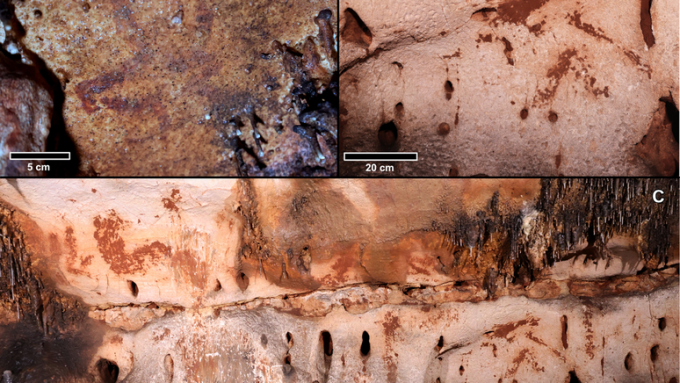Archaeologists working in the Valencia region of Spain have made a major discovery in a cave known as Cova Doves, which was once popular with explorers and hiking enthusiasts.
The site turned out to be a sanctuary of rock art from the Paleolithic, with more than 100 prehistoric engravings representing a variety of animals. The art collection could be more than 24,000 years old, according to experts.
see more
Meet the peculiar 'Jesus Christ Lizard' and DISCOVER why…
Check out the TOP astrological predictions for love on September 22nd…
Until then, only three examples of Pleistocene cave art were known from eastern Spain, with most of these discoveries concentrated in the north of the country and France, beyond the Pyrenees.
Archaeological treasure

(Photo: Ruiz-Redondo et al./Antiquity/Canaltech)
Cova Doves, located to the east-southeast, challenges this geographic distribution and expands our understanding of the spread of rock art in the region.
The cave walls house more than 110 graphic units, with the main decorated area situated around 400 meters underground.
Among the representations, 19 different species of animals were found, including horses, female red deer, aurochs and other unidentified animals.
Furthermore, the presence of “conventional signs” and tubular engravings known as “macaroni” demonstrates the skill and creativity of Paleolithic artists.
Ancient artists used a variety of techniques, including scraping limestone from walls to create shadowy figures, a rare technique in Paleolithic art of eastern Iberia.
Furthermore, the application of red clay to the walls, rather than the diluted ocher or manganese powder commonly used, is a unique and intriguing discovery.
Estimated age of paintings

(Photo: Ruiz-Redondo et al./Antiquity/Canaltech)
The presence of cave bear claw marks superimposed on some of the images suggests that some of the rock art may be more than 24,000 years old, based on the known extinction of this species.
However, research continues to refine the chronology of these fascinating discoveries. After all, pinpointing the precise dating of engravings is a challenge, even with these valuable clues.
The revelation of Cova Doves promises to continue to inspire research and debate among archaeologists and history enthusiasts, given its enormous relevance for understanding the way of life in the pre-writing period.


